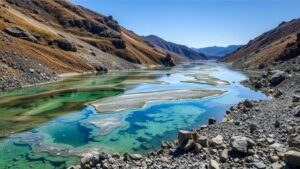Selling Your Finds at Gem and Rockhound Shows: Preparation Tips
Selling Your Finds at Gem and Rockhound Shows: Preparation Tips
Participating in gem and rockhound shows can be an exciting opportunity for collectors and vendors to showcase their finds. But, successful selling at these events requires careful preparation. This article offers practical tips to enhance your selling experience, ensuring you attract customers and make the most of your time at shows.
Understanding Your Audience
Before heading to a gem and rockhound show, it is crucial to understand the audience you will be catering to. Familiarize yourself with the demographics of attendees, which may include hobbyists, collectors, and professionals in the geological field.
Utilizing this knowledge can influence your selection of merchandise. For example, if the majority of attendees are novice collectors, featuring affordable, beginner-friendly specimens could be more successful than high-end items. On the other hand, at shows with a more experienced audience, rare mineral specimens and high-quality equipment might be more appealing.
Selecting Merchandise
Choosing the right items to sell is fundamental to your success. Assess the current trends in the gemstone and rock market, and curate a collection that reflects these demands. Consider the following aspects:
- Quality: Ensure that your items are well-preserved and visually appealing. High-quality photographs of your finds can be critical in attracting potential customers.
- Diversity: Offer a varied selection, including minerals, fossils, educational materials, and jewelry. This variety caters to different tastes and budgets.
- Local Gems: If you live in a region known for specific gemstones or minerals, featuring local finds can attract interest from fellow enthusiasts.
Pricing Your Items
Properly pricing your merchandise is a balancing act between attracting buyers and ensuring profitability. Research comparable items within the market to establish a competitive pricing structure. Consider using a pricing strategy that involves:
- Cost-Plus Pricing: Calculate the total cost of sourcing and preparing your items, then add a margin for profit.
- Market-Based Pricing: Analyze how similar items are priced at the show and adjust accordingly to remain competitive.
Creating An Attractive Display
The visual presentation of your merchandise can significantly impact customer engagement. Here are some tips for creating an appealing display:
- Professional Layout: Use display cases, stands, or shelves to organize your items neatly. A clean, well-organized booth stands out more than a cluttered space.
- Lighting: Good lighting enhances the appearance of gemstones and minerals. Consider utilizing LED lights to showcase their brilliance effectively.
- Informative Signage: Provide clear labels that include names, prices, and interesting facts about your finds to engage customers.
Preparing for Customer Engagement
Customer interaction can be a decisive factor in a sale. Engage potential buyers by:
- Practicing Your Pitch: Prepare a brief and compelling narrative for each of your key items, highlighting their uniqueness and history.
- Demonstrating Expertise: Be available to answer questions and provide insights into the geology and usability of your merchandise.
Logistics and Final Preparations
Effective logistics management is vital to ensuring a smooth experience at the show. Key logistical factors to consider include:
- Transportation: Ensure you have reliable methods for transporting your items, tools, and booth materials to and from the event.
- Permits and Fees: Verify and secure any necessary permits or vendor fees required for participation in the show.
Post-Show Follow-Up
After the event, its essential to reflect and follow up on your experience. Take note of:
- Sales Performance: Analyze what sold well and what didn’t, adjusting future inventory and strategies accordingly.
- Customer Connections: If you captured customer information, follow up with promotions or thank-you messages to foster relationships.
Conclusion
Selling at gem and rockhound shows offers a unique opportunity to share your passion with others while potentially generating income. By understanding your audience, selecting the right merchandise, pricing strategically, creating an attractive display, and engaging customers effectively, you can maximize your success. Remember to evaluate your performance post-show and continuously adapt to market trends to ensure your future endeavors are equally rewarding.



